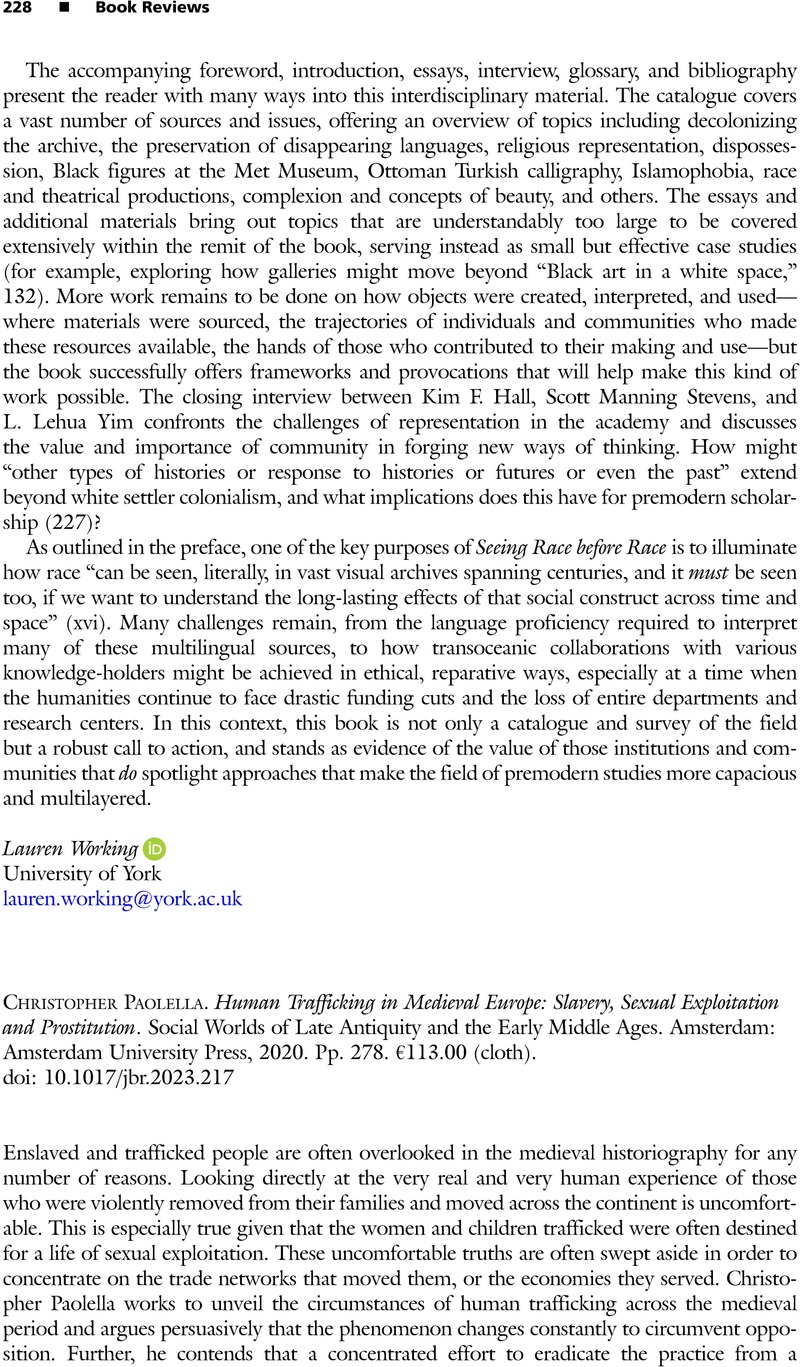No CrossRef data available.
Article contents
Christopher Paolella. Human Trafficking in Medieval Europe: Slavery, Sexual Exploitation and Prostitution. Social Worlds of Late Antiquity and the Early Middle Ages. Amsterdam: Amsterdam University Press, 2020. Pp. 278. €113.00 (cloth).
Review products
Christopher Paolella. Human Trafficking in Medieval Europe: Slavery, Sexual Exploitation and Prostitution. Social Worlds of Late Antiquity and the Early Middle Ages. Amsterdam: Amsterdam University Press, 2020. Pp. 278. €113.00 (cloth).
Published online by Cambridge University Press: 29 May 2024
Abstract
An abstract is not available for this content so a preview has been provided. Please use the Get access link above for information on how to access this content.

- Type
- Book Review
- Information
- Copyright
- Copyright © The Author(s), 2024. Published by Cambridge University Press on behalf of The North American Conference on British Studies



